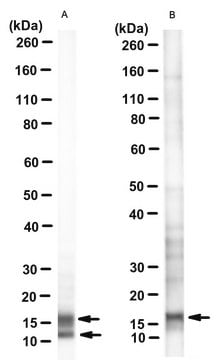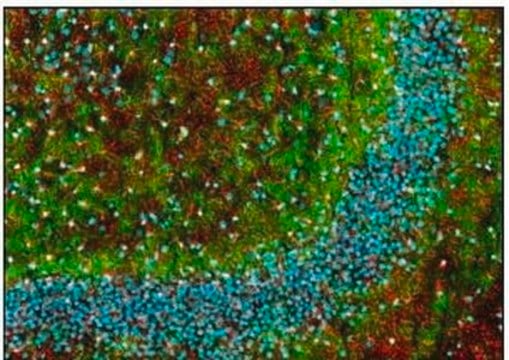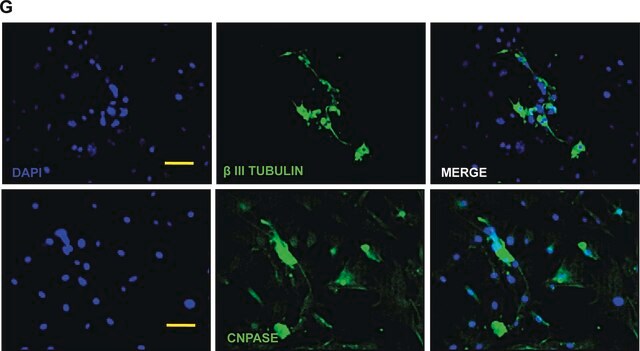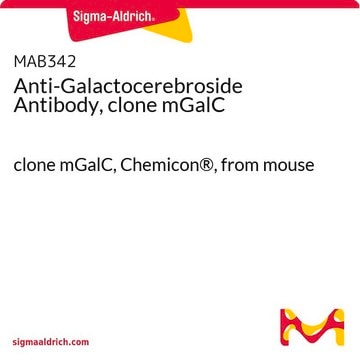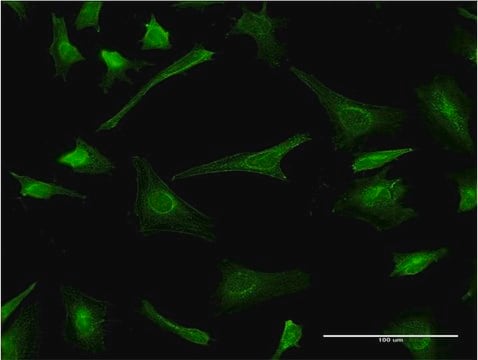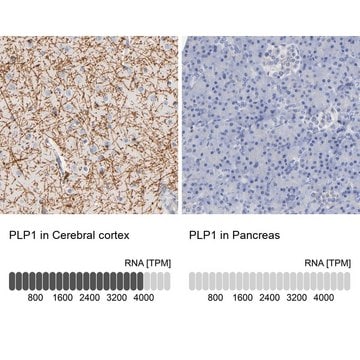MAB388
Anti-Myelin Proteolipid Protein Antibody, CT, clone PLPC1
clone PLPC1, Chemicon®, from mouse
Synonym(s):
PLP
About This Item
Recommended Products
biological source
mouse
Quality Level
antibody form
purified immunoglobulin
antibody product type
primary antibodies
clone
PLPC1, monoclonal
species reactivity (predicted by homology)
mammals
manufacturer/tradename
Chemicon®
technique(s)
immunohistochemistry (formalin-fixed, paraffin-embedded sections): suitable
western blot: suitable
isotype
IgG2a
NCBI accession no.
UniProt accession no.
shipped in
wet ice
target post-translational modification
unmodified
Gene Information
human ... PLP1(5354)
Specificity
Immunogen
Application
Neuroscience
Neuronal & Glial Markers
Neurochemistry & Neurotrophins
Immunocytochemistry: 4% PFA fixed cells, 5-10 minutes room temperature. Use 0.1% triton in block only to allow antibody access to C-terminal epitope.
Immunohistology on fresh frozen sections or 4% PFA fixed, frozen tissues. Epitope is internal, use 0.1-0.2% triton X-100 in the blocking step for permeabilization.
Immunohistochemistry in paraffin: works best with lightly fixed tissues, or Bouin′s fixed material, although there are reports of traditional formalin fixation also working with antigen recovery. {Mathis, et al 2003}.
Optimal working dilutions must be determined by end user.
Target description
Linkage
Physical form
Storage and Stability
Analysis Note
Brain
Other Notes
Legal Information
Disclaimer
Not finding the right product?
Try our Product Selector Tool.
Storage Class Code
12 - Non Combustible Liquids
WGK
WGK 2
Flash Point(F)
Not applicable
Flash Point(C)
Not applicable
Certificates of Analysis (COA)
Search for Certificates of Analysis (COA) by entering the products Lot/Batch Number. Lot and Batch Numbers can be found on a product’s label following the words ‘Lot’ or ‘Batch’.
Already Own This Product?
Find documentation for the products that you have recently purchased in the Document Library.
Articles
Derivation and characterization of functional human neural stem cell derived oligodendrocyte progenitor cells (OPCs) that efficiently myelinate primary neurons in culture.
Our team of scientists has experience in all areas of research including Life Science, Material Science, Chemical Synthesis, Chromatography, Analytical and many others.
Contact Technical Service